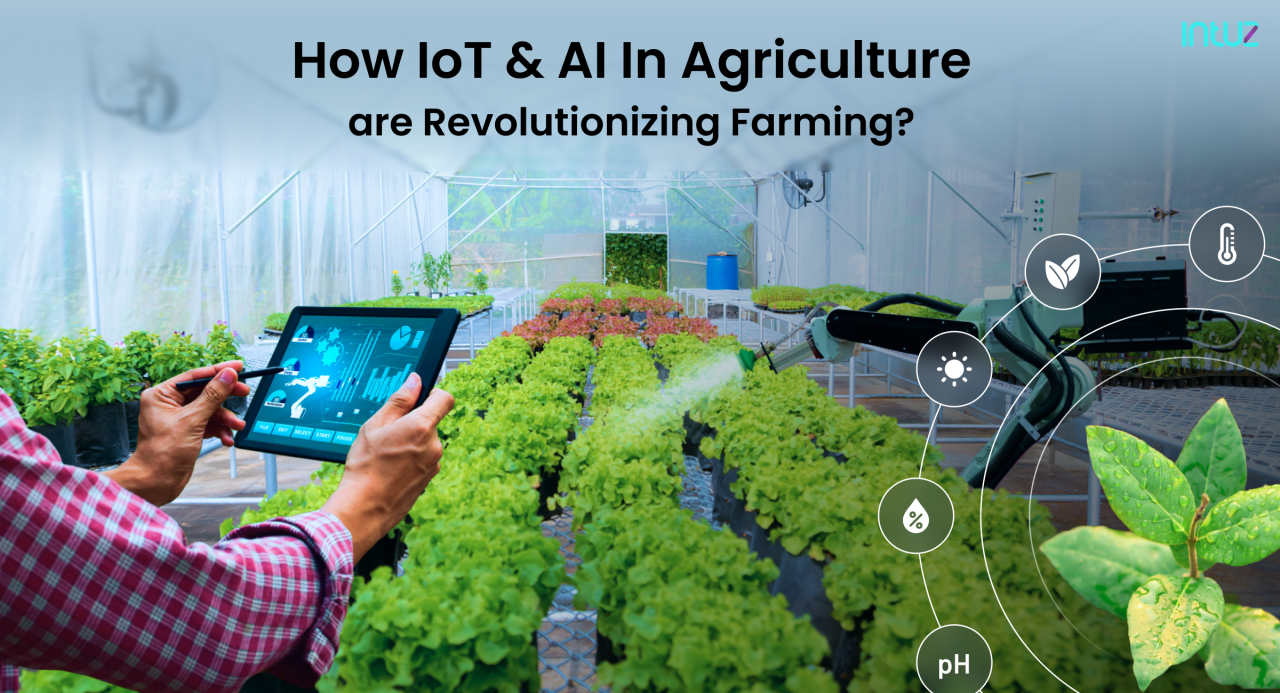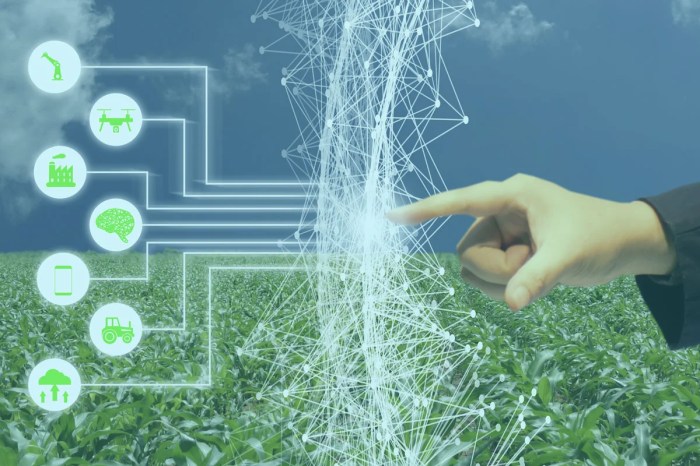Agricultural Technology
How Smart Farming Technology is Revolutionizing Agriculture

In today's rapidly evolving agricultural landscape, smart farming technology has emerged as a game-changer, revolutionizing traditional practices and paving the way for a more efficient and sustainable future. From precision agriculture to IoT and sensor technology, the integration of these cutting-edge innovations is reshaping the way we cultivate our lands and produce food.
Let's delve into the exciting world of smart farming technology and explore the myriad ways it is transforming agriculture as we know it.
The Role of Smart Farming Technology
Smart farming technology is revolutionizing traditional agricultural practices by integrating cutting-edge innovations to enhance efficiency, productivity, and sustainability in farming operations. These advancements leverage the power of data analytics, automation, and connectivity to optimize various aspects of agriculture.
Examples of Smart Farming Technologies
- IoT sensors: These devices collect real-time data on soil moisture, temperature, and nutrient levels, enabling farmers to make informed decisions about irrigation and fertilization.
- GPS technology: GPS-guided tractors and machinery help farmers optimize field operations, reduce overlaps, and minimize fuel consumption.
- Drones: Drones equipped with cameras and sensors can monitor crop health, detect pests or diseases, and assess field conditions from above.
- Robotics: Agricultural robots can perform tasks such as planting, weeding, and harvesting with precision and efficiency, reducing the need for manual labor.
Benefits of Smart Farming Technology
- Increased productivity: Smart farming technologies streamline operations and optimize resource use, leading to higher crop yields and improved farm output.
- Resource efficiency: By monitoring and managing resources more effectively, such as water, fertilizers, and pesticides, smart farming helps reduce waste and environmental impact.
- Precision agriculture: Precision farming techniques enable farmers to tailor their practices to specific field conditions, maximizing crop quality and minimizing input costs.
- Data-driven decision-making: Access to real-time data and analytics empowers farmers to make informed decisions that enhance crop management, pest control, and overall farm performance.
Precision Agriculture and Data Analytics
Precision agriculture has transformed traditional farming practices by utilizing technology to optimize crop production and resource management. Data analytics plays a crucial role in this transformation, allowing farmers to make informed decisions based on real-time data and insights.
Enhanced Crop Monitoring
- Data analytics enables farmers to monitor crop health and growth patterns through sensors and satellite imagery.
- By analyzing this data, farmers can identify areas of improvement and implement targeted interventions to maximize yields.
- For example, through data analytics, farmers can detect early signs of pest infestation or nutrient deficiencies, allowing for timely action to be taken.
Precise Resource Management
- Data analytics helps farmers optimize the use of resources such as water, fertilizers, and pesticides.
- By analyzing soil moisture levels and weather patterns, farmers can create tailored irrigation schedules to conserve water and enhance crop growth.
- Furthermore, data analytics can recommend precise fertilizer application rates based on soil nutrient content, reducing waste and environmental impact.
Yield Prediction and Forecasting
- Using historical data and machine learning algorithms, data analytics can predict crop yields and market demand with greater accuracy.
- This allows farmers to make strategic decisions regarding planting schedules, harvesting timelines, and market prices.
- By leveraging data analytics, farmers can optimize their operations for maximum efficiency and profitability.
IoT and Sensor Technology in Agriculture
IoT (Internet of Things) and sensor technology play a crucial role in revolutionizing agriculture by providing farmers with real-time data and insights to optimize their operations.
Enhancing Agricultural Operations
- IoT devices and sensors help farmers monitor environmental conditions such as temperature, humidity, and soil moisture levels.
- They enable precision irrigation systems that deliver the right amount of water to crops, reducing water wastage and improving crop yield.
- Sensors attached to agricultural machinery collect data on soil health, crop growth, and pest infestations, allowing for timely interventions and improved decision-making.
Importance of Real-Time Data Collection
- Real-time data collection provides farmers with instant insights into their operations, allowing them to make quick adjustments and optimize resource utilization.
- Monitoring key parameters in real-time helps in early detection of issues such as crop diseases, nutrient deficiencies, and water stress, preventing crop losses and increasing productivity.
- By integrating IoT devices and sensors, farmers can automate tasks such as nutrient application, pest control, and irrigation, leading to operational efficiency and cost savings.
Examples of IoT Devices and Sensors
- Smart weather stations that measure temperature, humidity, wind speed, and rainfall to provide accurate weather forecasts for better crop management.
- Soil moisture sensors that help farmers determine optimal irrigation schedules to prevent under or over-watering of crops.
- Drones equipped with multispectral cameras that capture high-resolution images of fields to assess crop health, detect pests, and monitor crop growth.
Automation and Robotics in Farming

Automation and robotics have drastically transformed the agricultural sector by revolutionizing various tasks that were once labor-intensive and time-consuming. These advancements have significantly impacted efficiency and productivity in farming operations.
Impact of Automation on Efficiency and Productivity
- Automated systems have streamlined tasks such as planting, watering, and harvesting, reducing the need for manual labor and increasing overall efficiency.
- Robotic technology allows for precise and accurate operations, leading to higher yields and improved crop quality.
- Automation minimizes human error and ensures consistent performance, ultimately boosting productivity on farms.
Examples of Automated Systems and Robots
- Automated irrigation systems that monitor soil moisture levels and adjust watering schedules accordingly.
- Robotic harvesters equipped with sensors and cameras to identify ripe produce and harvest them efficiently.
- Drones used for aerial monitoring of crops, providing valuable insights into plant health and growth patterns.
Sustainable Farming Practices with Smart Technology
Smart farming technology plays a crucial role in promoting sustainable agriculture by optimizing resource utilization, reducing waste, and minimizing environmental impact. By integrating advanced tools and techniques, farmers can implement sustainable practices that benefit both their operations and the planet.
Environmental Benefits of Smart Technology in Agriculture
- Resource Efficiency: Smart technology enables precise monitoring and management of water, fertilizers, and pesticides, leading to reduced usage and minimized waste.
- Soil Health: By utilizing sensors and data analytics, farmers can maintain optimal soil conditions, preventing erosion and degradation.
- Biodiversity Conservation: Smart farming promotes the preservation of natural habitats and ecosystems on farmlands, supporting biodiversity and ecological balance.
- Carbon Footprint Reduction: Automation and robotics in farming operations contribute to lower energy consumption and greenhouse gas emissions.
Examples of Sustainable Farming Practices Enabled by Smart Technology
- Precision Irrigation: Smart irrigation systems adjust water delivery based on real-time data, ensuring crops receive just the right amount of water, reducing water waste.
- Crop Monitoring: Drones equipped with sensors can survey fields for pest infestations or nutrient deficiencies, enabling targeted interventions and reducing the need for chemical inputs.
- Integrated Pest Management: Smart technology allows for the implementation of biological control methods and pheromone traps, minimizing reliance on chemical pesticides.
- Cover Cropping: Data analytics help farmers determine the best cover crops to improve soil health, prevent erosion, and enhance biodiversity on the farm.
Final Wrap-Up

As we conclude our exploration of how smart farming technology is revolutionizing agriculture, it becomes evident that the future of farming is intrinsically linked to technological advancements. With a focus on sustainability, efficiency, and productivity, smart farming is not just a trend but a necessity in ensuring food security and environmental conservation.
Embracing these innovations will undoubtedly shape the agriculture of tomorrow, ushering in a new era of smart, connected, and sustainable farming practices.
Question & Answer Hub
How does smart farming technology benefit agriculture?
Smart farming technology enhances efficiency, productivity, and sustainability in agriculture by optimizing resource management, improving crop yields, and reducing environmental impact.
What are some examples of smart farming technologies?
Examples include precision agriculture tools like drones and GPS systems, IoT devices for real-time monitoring, automated systems for tasks like irrigation and harvesting, and sensor technology for data collection.
Why is data analytics important in smart farming?
Data analytics plays a crucial role in smart farming by providing insights for better decision-making, optimizing crop production, and resource allocation based on real-time data analysis.
-

 General6 months ago
General6 months agoSmall Home Renovation Ideas: 5 Creative Ways to Maximize Space
-

 General8 months ago
General8 months agoAI-powered lifestyle design tools for home planning: Revolutionizing Efficiency and Customization
-

 General8 months ago
General8 months agoCaptivating Title: Interior and Exterior Design Ideas for Wellness Retreats
-

 General6 months ago
General6 months agoCaptivating Fire Pit Patio Design Ideas to Transform Your Outdoor Space
-

 General6 months ago
General6 months agoThe Ultimate Guide to the Best Architectural Rendering Services for High-End Real Estate
-

 General7 months ago
General7 months agoEco-Friendly House Paint Options: A Guide to Sustainable Painting Choices
-

 General7 months ago
General7 months agoCrafting Energy Efficient Home Exteriors: A Guide to Sustainability
-

 General7 months ago
General7 months agoCrafting a Timeless Aura: Unveiling the Magic of Scandinavian Interior Design





